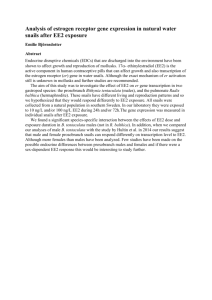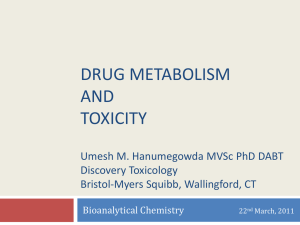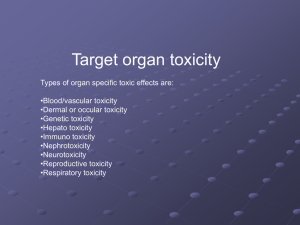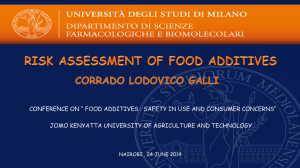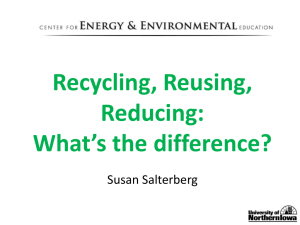Excessive false positive error rate
advertisement
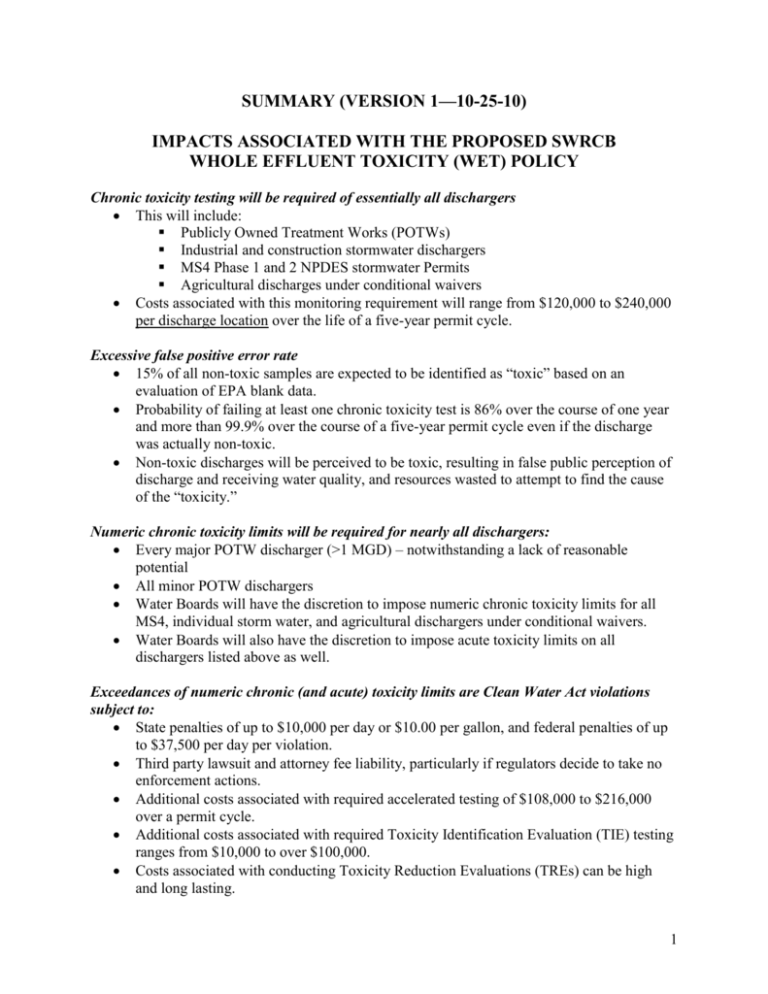
SUMMARY (VERSION 1—10-25-10) IMPACTS ASSOCIATED WITH THE PROPOSED SWRCB WHOLE EFFLUENT TOXICITY (WET) POLICY Chronic toxicity testing will be required of essentially all dischargers This will include: Publicly Owned Treatment Works (POTWs) Industrial and construction stormwater dischargers MS4 Phase 1 and 2 NPDES stormwater Permits Agricultural discharges under conditional waivers Costs associated with this monitoring requirement will range from $120,000 to $240,000 per discharge location over the life of a five-year permit cycle. Excessive false positive error rate 15% of all non-toxic samples are expected to be identified as “toxic” based on an evaluation of EPA blank data. Probability of failing at least one chronic toxicity test is 86% over the course of one year and more than 99.9% over the course of a five-year permit cycle even if the discharge was actually non-toxic. Non-toxic discharges will be perceived to be toxic, resulting in false public perception of discharge and receiving water quality, and resources wasted to attempt to find the cause of the “toxicity.” Numeric chronic toxicity limits will be required for nearly all dischargers: Every major POTW discharger (>1 MGD) – notwithstanding a lack of reasonable potential All minor POTW dischargers Water Boards will have the discretion to impose numeric chronic toxicity limits for all MS4, individual storm water, and agricultural dischargers under conditional waivers. Water Boards will also have the discretion to impose acute toxicity limits on all dischargers listed above as well. Exceedances of numeric chronic (and acute) toxicity limits are Clean Water Act violations subject to: State penalties of up to $10,000 per day or $10.00 per gallon, and federal penalties of up to $37,500 per day per violation. Third party lawsuit and attorney fee liability, particularly if regulators decide to take no enforcement actions. Additional costs associated with required accelerated testing of $108,000 to $216,000 over a permit cycle. Additional costs associated with required Toxicity Identification Evaluation (TIE) testing ranges from $10,000 to over $100,000. Costs associated with conducting Toxicity Reduction Evaluations (TREs) can be high and long lasting. 1 Costs associated with unnecessary treatment upgrades in response to false positive toxicity exceedances can be astronomical. None of the costs associated with coming into compliance in instances of actual toxicity were considered since these costs were determined to be “too speculative.” Essentially all waters of the State will be identified as impaired for toxicity: Clean Water Act section 303(d) impairment designation will occur if two or more receiving water samples are identified as toxic. An 89% chance of 303(d) impairment designation exists even for a completely non-toxic receiving water. Once a waterbody is listed, the false positive error rate will make it practically impossible to statistically demonstrate that a waterbody will meet 303(d) delisting requirements, even for a completely non-toxic receiving water. TMDLs will therefore be required for all waterbodies without any way to demonstrate that the waterbody will be attaining beneficial uses. Dischargers who have the TMDL allocations incorporated into NPDES permits will be at risk for permit violations for non-toxic conditions. Erroneous 303(d) listings will divert State resources from development of TMDLs with legitimate impairments. LEGAL AND POLICY ISSUES ASSOCIATED WITH THE PROPOSED SWRCB WHOLE EFFLUENT TOXICITY (WET) POLICY The Proposed Policy and associated analytical tools were not promulgated or established through formal rule making The Staff Report states that the “numeric objectives included in the Policy are simply a concise statement of several elements in U.S. EPA’s TST document.” (See Staff Report at 65.) The TST procedures were adopted from recent EPA guidance document that was never released for public comment. The proposed Policy’s statistical procedures are not contained in the formally adopted 40 CFR part 136 methods. This Policy likely represents “underground rulemaking.” The Policy is Unnecessarily Stringent. There is no evidence that these objectives and effluent limits are necessary. Every instance setting forth findings regarding toxicity and effects of the same is qualified with “may be,” “might be,” or “could be.” There are no concrete examples provided, only conclusory statements that “the potential for ecological harm would likely increase” without the Policy (see Staff Report at 45). The compliance schedule provisions in the proposed Policy are inappropriately restrictive. Essentially, if a discharger currently monitors for toxicity, that discharger 2 may not be allowed time to come into compliance with new more stringent limitations. Further, even where a compliance schedule is authorized, the duration of the compliance schedule may not exceed two years. Current State Water Board policy allows up to 10 years to comply with non-CTR constituents. The statewide numeric objectives would not supersede existing narrative objectives in the individual basin plans, thereby allowing regional water boards to “translate” the narratives into additional or different limits. The Proposed Policy conflicts with and is more stringent than federal law. The Policy is more stringent than required by federal law since it automatically assumes reasonable potential for toxicity for large (more than 1 mgd) POTWs. This is contrary to the federal rule (40 C.F.R. §122.44(d)(1)(iv)), which only prescribes an effluent limit for toxicity where there is “the reasonable potential to cause, or contribute to an in-stream excursion above the numeric criterion for whole effluent toxicity.” The Policy is more stringent than required by federal law since it requires numeric effluent limits when not required by federal or state law. (See Communities for a Better Environment (CBE) v. State Board/Tesoro,109 Cal.App.4th 1089, 1103–07 (2003); State Board Order No. WQ 91-03, 1991 WL 135460, at 12; 40 C.F.R. §122.44(k). The Policy is more stringent than required by federal law since it requires maximum daily effluent limitations not required under 40 C.F.R. §122.45(d)(2). The Policy attempts to argue that longer term limits would be “impractical,” which is not the regulatory standard, and the arguments are not supported with adequate findings and evidence. Moreover, the Policy’s Staff Report actually contradicts this by including an alternative for longer term average limits (see Staff Report at 54 (showing monthly and weekly average limits for POTWs). The Policy is more stringent than required by federal law because it will result in more frequent determinations of effluent as toxic than use of the procedures currently required under federal law for toxicity testing. All of the more stringent than federal law requirements become unfunded state mandates. The Proposed Policy Places Greater Importance on Ease of Enforcement than Water Quality Protection. The main difference between the policy and the current regulatory approach is that now, identified instances of toxicity must proceed to TIE/TRE or the discharger is subject to enforcement. Under the proposed Policy, identified instances of toxicity--including false positives-- will constitute violations subject to administrative and civil enforcement. 3 The current approach, where effluent limits are prescribed for specific toxicants identified as causing the failures, will result in greater water quality improvement than will the proposed Policy. The proposed Policy merely makes test failures enforceable without changing anything in the effluent or in the environment. This not only diverts resources from the identification and reduction of the toxicity, but penalizes dischargers “genuinely attempting to reduce toxicity through an aggressive TRE process” (see Staff Report at 44). The proposed Policy imposes two different ways to “fail” a test (test result or percent effect), thereby increasing the likelihood of failure. Failures constitute both “an exceedance of an effluent limitation” and “an excursion above the objectives,” thereby causing two permit violations for each test failure, by definition. The Policy’s CEQA Checklist is Inaccurate. The checklist finds “no impact” from the construction of new wastewater or stormwater treatment facilities, which is inaccurate. (See Staff Report at 78.) The SAIC economic analysis states that reverse osmosis or other control technologies may be required for some pollutants causing toxicity (see SAIC Economic Analysis at 5-7.) Thus, the “no impact” selection was misplaced. Further, an analysis of the costs of these treatment technologies was never undertaken because the treatment needed is “highly site-specific.” The Water Code section 13241 and Economic Analyses are Inadequate. The Water Code section 13241 analysis is inadequate, without any citations to facts or evidence to support the conclusions. (see Staff Report at 63-64). The Economic Analysis done by SAIC is inaccurate, as it was done prior to the most recent modifications to the proposed Policy and is based on data from before 2008. Moreover, the costs considered are only for monitoring, not for compliance/treatment, enforcement, or citizen suit exposure. All of these costs need to be considered as they are all above the current baseline condition (except for TRE activities that are currently required). 4


